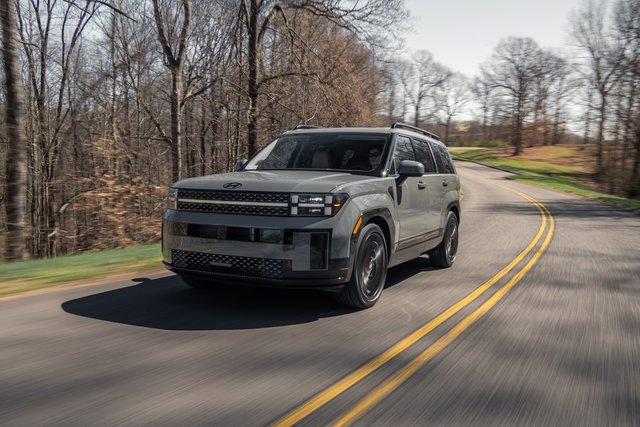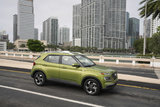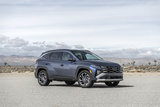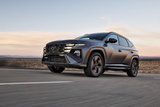As the automotive world shifts towards sustainable mobility, Hyundai offers a versatile lineup of electrified vehicles that cater to various needs. Whether you are considering a fully electric vehicle (EV), a plug-in hybrid (PHEV), or a traditional hybrid, Hyundai's 2025 models bring impressive performance, cutting-edge technology, and Canadian-specific capabilities. Below, we break down the differences between Hyundai’s electrified models, highlight how they behave during winter, and offer insights to help you choose the right one.
What Are the Differences Between Hybrid, Plug-in Hybrid, and Electric Vehicles?
- Hybrid (HEV): A hybrid vehicle uses both a gasoline engine and an electric motor to improve fuel efficiency. It doesn’t need to be plugged in, as the battery is recharged during driving through regenerative braking and the engine.
- Plug-in Hybrid (PHEV): A PHEV also combines a gasoline engine and an electric motor, but it can be plugged in to charge the battery. This allows you to drive shorter distances on electric power alone, switching to the gas engine for longer trips.
- Electric Vehicle (EV): An EV relies solely on an electric motor and battery, emitting no emissions. It must be charged at home or at public charging stations. Hyundai offers both compact and mid-size electric vehicles for Canadian drivers.
Overview of Hyundai’s 2025 Electrified Lineup
- 2025 Hyundai IONIQ 5 – Redesigned with a Focus on Range and Comfort
The IONIQ 5, known for its futuristic design, has been refreshed for 2025. With more than 400 km of range on a full charge, the IONIQ 5 offers all the space of an SUV with the energy efficiency of an EV. For Canadian winters, the heat pump ensures cabin warmth without significantly impacting battery life. With rapid-charging capabilities, it can regain up to 80% of its range in 18 minutes at a DC fast charger.
Best For: Families and those seeking a spacious, tech-filled electric SUV with extended range for road trips.
- 2025 Hyundai IONIQ 6 – Aerodynamic Design with Impressive Range
The IONIQ 6 is Hyundai’s sleek, all-electric sedan designed to prioritize efficiency. With a range exceeding 500 km, it’s ideal for long-distance commuting. The vehicle’s low drag coefficient improves performance in all seasons, and pre-conditioning the battery helps maintain range during freezing temperatures. The IONIQ 6 also supports ultra-fast charging, making it practical for both daily drives and extended journeys.
Best For: Drivers who want a long-range electric vehicle with a more traditional sedan feel.
- 2025 Hyundai Kona EV – Compact and City-Friendly
The Kona EV, one of Hyundai’s most popular electric models, balances a compact size with an electric range of around 400 km. Redesigned for 2025, it offers improved technology and comfort, making it ideal for urban drivers. In winter, using the pre-conditioning feature helps maintain battery efficiency, while the all-electric powertrain ensures smooth operation on icy roads.
Best For: Urban drivers seeking a practical and efficient electric vehicle for city commutes.
- 2025 Hyundai Tucson Hybrid – Everyday Efficiency Meets SUV Practicality
The Tucson Hybrid combines a 1.6L turbo engine with an electric motor, delivering strong performance and improved fuel economy. It offers all the cargo space of a regular Tucson but with better fuel savings. As a self-charging hybrid, it works seamlessly without the need to plug it in, making it a great option for those who want efficiency without changing their driving habits.
Best For: Families looking for an efficient, practical SUV for daily use without worrying about charging.
- 2025 Hyundai Tucson PHEV – A Versatile SUV for Short and Long Journeys
The Tucson PHEV builds on the Tucson Hybrid with a larger battery that allows for about 50 km of all-electric driving. It offers the same interior space and features, but with the added benefit of reducing fuel consumption on shorter drives. Plug it in at home or at public charging stations to maximize electric range, and rely on the gasoline engine for longer trips.
Best For: Drivers who want to reduce fuel usage during their daily commutes without sacrificing the flexibility of an SUV for road trips.
- 2025 Hyundai Santa Fe – Now Equipped with a Standard Hybrid Powertrain
The 2025 Hyundai Santa Fe has undergone a complete redesign, now featuring a standard hybrid engine. This family-oriented SUV combines fuel efficiency with spaciousness, making it an excellent choice for those who need both versatility and savings at the pump. Its hybrid system helps reduce emissions without the need for charging, while advanced safety features enhance winter driving confidence.
Best For: Larger families who need a spacious SUV with better fuel economy than traditional gas-powered models.
How Do Hyundai’s Electrified Vehicles Perform in Canadian Winters?
Hyundai’s electrified vehicles, especially the EVs and PHEVs, are built to handle cold weather with features like heat pumps, battery pre-conditioning, and all-wheel drive options. These technologies minimize the impact of low temperatures on range and performance. In hybrid models, the gasoline engine ensures reliable performance even when temperatures drop.
Plug-in hybrids and electric vehicles come with Hyundai’s BlueLink® app, which allows you to pre-heat the cabin and battery before setting off, ensuring you have a warm vehicle without sacrificing range. Additionally, Hyundai’s regenerative braking systems provide better control on icy roads, which is an advantage during harsh winter conditions.
Which Hyundai Electrified Vehicle Should You Choose?
- Choose a Hybrid (Tucson Hybrid or Santa Fe Hybrid) if you want improved fuel economy without worrying about charging. It’s the best option for those who want to drive as usual while enjoying the benefits of a hybrid system.
- Choose a Plug-in Hybrid (Tucson PHEV) if you want the flexibility to drive short distances on electric power but still need the freedom of a gasoline engine for longer trips.
- Choose an Electric Vehicle (IONIQ 5, IONIQ 6, Kona EV) if you’re ready to switch to fully electric driving. These models are ideal for drivers with access to charging at home or on the road and who want the benefits of zero-emission driving.
What Charging Options Are Available for Hyundai Electric and PHEV Models?
Hyundai electric and plug-in hybrid models can be charged using Level 1 (household outlet), Level 2 (home or public charging stations), or Level 3 (DC fast charging).
- Level 1 Charging: Best for overnight charging but is slower, adding around 8 km of range per hour.
- Level 2 Charging: A more practical solution for daily use, adding about 30-40 km per hour of charging. Installing a Level 2 charger at home is recommended for EV owners.
- Level 3 Fast Charging: Ideal for road trips, adding 80% of the battery capacity in under 30 minutes on compatible EV models.
Conclusion
Hyundai’s 2025 lineup offers a wide range of electrified vehicles to suit various driving needs. From the spacious IONIQ 5 and sleek IONIQ 6 to the versatile Tucson Hybrid and PHEV, and the practical Kona EV, there is a model for every lifestyle. Whether you want the simplicity of a hybrid, the flexibility of a plug-in hybrid, or the innovation of a fully electric vehicle, Hyundai provides Canadian drivers with reliable and efficient options. And with features tailored for winter performance, Hyundai’s electrified vehicles are more than ready for the unique challenges of driving in Canada.






